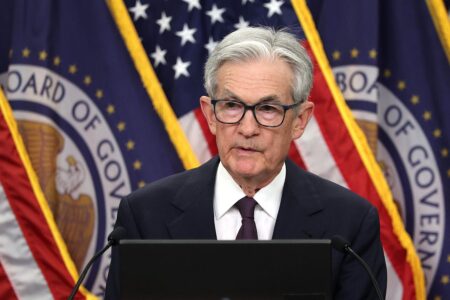Jenni Field, Leadership Credibility and Organisational Communication Expert, Author of Nobody Believes You.
The focus on authenticity in leadership has been trending for years, but especially since the pandemic. Leaders are constantly told they need to “be more authentic,” “bring their whole selves to work,” and “show vulnerability.”
Driven by factors like the ethical challenges in the early 2000s, changing workforce dynamics post-pandemic and different generational expectations in the workplace, the term “authentic leadership” has grown at an accelerated rate in the last decade.
But after five years of researching this topic, I’ve found that what many people really want isn’t authenticity—it’s credibility.
Why Authenticity Isn’t Enough
Authenticity, while valuable in certain contexts, has several fundamental flaws as a leadership principle:
• It’s easily weaponized.
• It’s highly subjective.
• It can give people permission to behave badly.
• It doesn’t necessarily create followers.
Think about it: Many leaders around the world could be described as “authentic.” They genuinely express their beliefs and don’t hide who they are. But are they leaders people want to follow?
What The Research Reveals
To understand what truly makes people follow leaders, in 2023, I conducted research with over 350 leaders and followers, covering different age groups and different parts of the world. We carried out a survey asking leaders, and then followers, how they ranked nine potential traits of credible leadership and tested them with one extra hypothesis: Do men and women feel differently about these traits?
The results were illuminating. When asked to rank which attribute was most important for credible leadership:
Leaders ranked:
• Having integrity: 45.1%
• Being trustworthy: 27.7%
• Being empathetic: 9%
Followers ranked:
• Having integrity: 39%
• Being trustworthy: 33%
• Creating psychological safety: 11%
I think the gap in perception is clear: Followers value credibility more than they believe their leaders do. Even more interesting were the gender differences that emerged.
Male leaders ranked integrity higher than female leaders (51% versus 41%), while female leaders placed much greater emphasis on trustworthiness (35% versus 18%). For men who lead, being decisive ranked as more important than taking action, while women prioritized the opposite.
Interestingly, a Deloitte study in 2021 found that at the start of their careers, women have trust levels comparable to men. However, as they progress, particularly by the director level, women’s trust in their employers drops significantly—about 30% lower than their male counterparts. What my research doesn’t tell us is the role female leaders have inside organizations.
Age Makes A Difference Too
My research revealed fascinating generational preferences:
• Leaders over 50 placed more value on integrity than their younger counterparts.
• Followers aged 51-69 prioritized empathy more than other age groups.
• Followers aged 35-50 placed greater importance on psychological safety.
These findings support ongoing discussions about generational differences in workplace expectations and highlight the need to focus on organizational culture to foster collaboration and innovation.
The Eight Practices That Build Leadership Credibility
Based on this research, I’ve identified eight key practices that combine to create a leader people will follow:
1. Capable: Knowledge of industry/role, respectful, takes action
2. Likeable: Agreeable, light-hearted, charismatic
3. Integrity: Keeps their word, genuine, accountable
4. Empathetic: Caring, compassionate, flexible
5. Supportive: Safe, humble, inclusive
6. Trustworthy: Honest, transparent, reliable
7. Visionary: Inspiring, strong communication skills, passionate
8. Vulnerable: Human, courageous, open
These eight practices aren’t isolated traits but complementary behaviors that, when practiced consistently, enable people to believe and follow a leader. Think of them as a wheel, with each segment reinforcing the others.
What’s Blocking Your Credibility?
Leaders identified eight key challenges that make building credibility difficult:
1. Time Management: Balancing competing priorities and workloads
2. Relationships: Gaining buy-in from superiors, peers and subordinates
3. Navigating Change And Uncertainty: Managing through ambiguity
4. Leadership Development: Building essential skills and mentoring others
5. Communication: Effective dialogue both internally and externally
6. Diversity And Inclusion: Understanding and navigating diversity across generations
7. Personal Growth And Self-Doubt: Overcoming imposter syndrome
8. Remote Work And Hybrid Workplaces: Maintaining team cohesion virtually
These blockers represent the reality of modern leadership: It’s complex, demanding and requires intentional practice to develop credibility.
Why This Matters Now
We’re in an era where trust in leadership is at a premium. The pandemic changed how we view work, and many employees are demanding more from their organizations. Creating credible leadership isn’t just about personal development—it’s a business imperative.
What’s clear from the research is that these practices have different levels of importance for different people. What matters to you as a leader might be less important to those who follow you. This gap in perspective is exactly what undermines so many leadership relationships.
How To Build Your Leadership Credibility
If you’re looking to become a more credible leader, start by understanding where your gaps are. Rather than focusing on “authenticity” as a nebulous concept, approach credibility as a set of specific practices you can develop:
1. Assess your current credibility. Which of the eight practices are your strengths? Where do you need development?
2. Ask for feedback. Do your team members see you as credible? What might be undermining their perception?
3. Identify your challenges. Which of the eight blockers are most relevant for you?
4. Create an action plan. Focus on one practice at a time, building your skills deliberately.
Remember that credibility isn’t built overnight—it’s developed through consistent behavior over time. The smaller your say-do gap (the distance between what you say and what you actually do), the stronger your credibility will be.
Authenticity without credibility is just personality. What organizations need are leaders people believe in and want to follow. By focusing on these eight practices, you can develop into the kind of leader people will follow—not because they have to, but because they want to.
Whether you lead an organization or a team, this research offers a roadmap for developing the specific practices that will make you more credible to those you lead. And ultimately, it’s the time and effort you invest in those you lead that will make them follow you.
Forbes Business Council is the foremost growth and networking organization for business owners and leaders. Do I qualify?
Read the full article here











